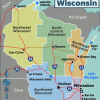Source: DS News —
Prior to 2022, analysts across most markets predicted a continued run of good fortune. Perhaps it was denial or simply the hope that the Federal Reserve would achieve the soft landing that (so far) eludes us. No matter the root cause, analysts saw their hopes shatter as, for example, consensus estimates of the S&P 500 striking 5,225 by year’s end fell short by more than 40%.
A confluence of factors spun together to create the perfect economic storm we’ve experienced: rampant inflation, geopolitical uncertainty, nearly a decade-long bull run, overinflated valuations, and (perhaps most devasting) a series of rate hikes marking the end of the pandemic era’s environment of cheap debt and soaring investments.
What Happened in Housing?
Anyone paying attention could have predicted the impact of rate hikes, especially on the housing market. Rock-bottom rates led to a 50-year low in fixed-rate mortgage average at just below 2.7%, while supply chain chokepoints led to a housing supply shortage, and economic stimulus led to soaring home prices as investors speculated wildly which drove values upward. And, as with most other markets, the fall happened nearly as fast as the meteoric rise.
Logistics caught up, and new starts began again. Economic uncertainty and the highest fixed-rate mortgage average since 2000 (6.95%) caused supply to catch up and surpass demand.
The few who could sell at the top considered themselves lucky as home sales slumped, the median days on the market for home sales doubled, and prices for homes that did sell dropped by nearly 30% in less than six months.
The housing slump is easily the economy’s most significant casualty in the Fed’s fight against inflation—even if the full scope isn’t yet apparent.
Volatile equities can generally be counted upon to revert to a mean over time. Fixed-income investing is enjoying a new resurgence, despite inflationary pressures on even the best Treasury rates. Home valuation inflation means many late-2021 and early-2022 buyers may be seeing underwater mortgages in their future. Dormant new builds are sitting on unfortunate developer balance sheets, with little reprieve as financially insecure Americans hunker down, unwilling to brave near-double-digit mortgage rates.
Early Warning Signs
But, despite the blaring alarms towards the end of 2021, careful observers spotted red flags as we ended the previous decade. Post-2008’s “Great Financial Crisis,” housing prices hit a low in mid-2012 before rebounding and climbing with limited headwinds for the rest of the 2010s.
A decade-plus of quantitative easing began, ending before the pandemic reared its head, and 2019’s interest rates began nosing around 4%—the highest they had been in more than a decade, and considered high for the time. Many thought the pandemic’s emergence would end an eight-year housing bull run. The prediction proved untrue as home prices enjoyed a V-shaped recovery alongside equities. That reversal interrupted what would have otherwise been a predictable dip in naturally occurring market cycles (albeit triggered synthetically).
Today, the early warning signs were true portents of things to come, and the full extent of the fallout has yet to be determined.
The Decline?
Auction.com, a real estate auction site offering existing and aspiring investors access to (mostly) distressed assets, generated very revealing information about the state of real estate assets throughout 2022. Auction.com’s end-of-year reports showed 6.5 million unique users active on the site throughout 2022. However, just a fraction of those ultimately used the platform as an auction house to buy investment properties.
Primarily populated by smaller, local investors rather than or private equity/debt funds, Auction.com’s bidders and buyers are effectively community developers buying properties, improving them, and investing in the areas they live. Typically, the post-purchase cycle extends through three to six months of property renovation before renting the home as a long-term investment and cash flow vehicle, or simply flipping the property.
The site’s reports are a good barometer for what may be coming: a proverbial canary in the coalmine where the auction house’s relatively small population acts as a proxy for the national home buying and real estate market. Over the year, buyer behavior began a subtle but dramatic shift. Between the first and third quarters, bidding became much more muted and conservative; buyers set their bids at around an 11% discount on foreclosures in Q1. That discount fell to 23% below the as-is value by Q3. This sign of things to come shows that if the trend continues and the aftershocks of rate hikes extend to the real estate market in toto, we may see a complete slowdown by March 2023.
The data points to a comparison between public equities and the real estate market, albeit on a slowed timeline. As the first rumblings of quantitative tightening began, the riskiest high-P/E stocks with limited fundamental bases collapsed from their sky-high valuations as an initial casualty.
Over time, the blue-chip and fundamentally-sound equities also saw a steep drop. It just took longer. So, much like high-risk/high-reward tech stocks suffered long before the aristocratic market mainstays, the foreclosures point to future turbulence in cornerstones like single-family homes and long-term rentals.
















